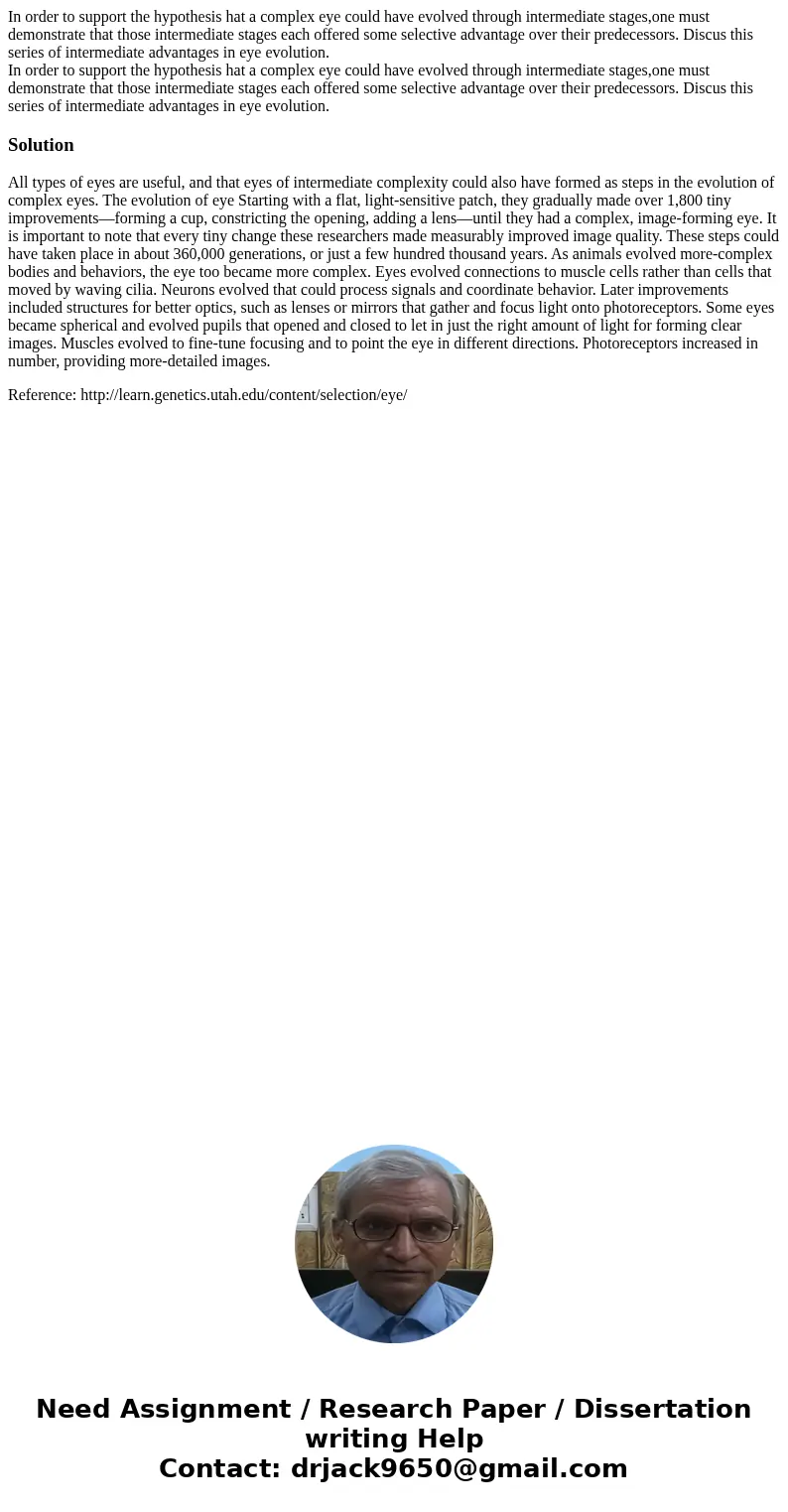In order to support the hypothesis hat a complex eye could h
Solution
All types of eyes are useful, and that eyes of intermediate complexity could also have formed as steps in the evolution of complex eyes. The evolution of eye Starting with a flat, light-sensitive patch, they gradually made over 1,800 tiny improvements—forming a cup, constricting the opening, adding a lens—until they had a complex, image-forming eye. It is important to note that every tiny change these researchers made measurably improved image quality. These steps could have taken place in about 360,000 generations, or just a few hundred thousand years. As animals evolved more-complex bodies and behaviors, the eye too became more complex. Eyes evolved connections to muscle cells rather than cells that moved by waving cilia. Neurons evolved that could process signals and coordinate behavior. Later improvements included structures for better optics, such as lenses or mirrors that gather and focus light onto photoreceptors. Some eyes became spherical and evolved pupils that opened and closed to let in just the right amount of light for forming clear images. Muscles evolved to fine-tune focusing and to point the eye in different directions. Photoreceptors increased in number, providing more-detailed images.
Reference: http://learn.genetics.utah.edu/content/selection/eye/

 Homework Sourse
Homework Sourse